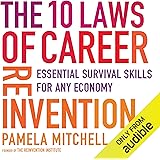Many professionals often feel overwhelmed or frustrated by the seemingly elusive world of professional networking. They might believe their network is small, or that asking for help is an imposition, leading to ineffective or even counterproductive efforts. However, as Tom Friel insightfully illustrates in the accompanying video, the key to unlocking immense career opportunities lies not in expanding your network’s raw size, but in understanding its true scope and approaching it with precision and respect.
The challenge frequently stems from a fundamental misunderstanding of what a network truly is and how to activate its potential effectively. Adopting a strategic mindset for professional networking transforms sporadic, hopeful outreach into a powerful, results-driven engine for career advancement. This involves a deliberate shift from vague requests to highly targeted, value-driven interactions that benefit all parties involved.
Unveiling Your Enormous Professional Network
Your professional network is likely far more expansive than you currently perceive. It stretches significantly beyond your immediate colleagues and direct acquaintances, encompassing a vast web of indirect connections. Consider your initial circle, then include everyone they know, and subsequently, everyone *those* individuals know; this quickly branches into hundreds of thousands of people potentially available to you.
This expansive interconnectedness forms a powerful ecosystem, especially when leveraging structured communities like alumni associations. Graduates from institutions like Stanford Business School, for instance, often foster strong, supportive networks. These communities are typically predisposed to assist fellow alumni, offering invaluable pathways for strategic networking and introductions when approached correctly.
Identifying potential connectors within this extensive web requires a systematic approach. Platforms such as LinkedIn are instrumental for mapping these secondary and tertiary connections. You can trace mutual contacts or explore shared affiliations to pinpoint individuals who might serve as ideal conduits to your desired target, thereby making your network truly work for you.
Mapping Your Indirect Connections for Strategic Introductions
Understanding the full breadth of your network is the first critical step toward effective engagement. Begin by listing all your direct contacts, then consider their professional spheres and personal connections. This mental exercise reveals numerous pathways you might not have consciously recognized previously.
For example, if you seek to enter a new industry, think about former classmates, mentors, or even family friends who might have ties to that sector. An alumnus from your university working in that field, even if several years ahead of you, represents a credible and often willing point of connection. These indirect links often prove stronger than cold outreach because they arrive with an implicit endorsement.
Leveraging these connections requires more than just knowing they exist; it demands a clear understanding of who to approach and why. Research the professional backgrounds and interests of your connectors to identify those most likely to have a direct line to your specific target. This targeted approach ensures your outreach is both relevant and respectful of their time and influence.
The Art of the Specific Request: Beyond the Lazy Ask
A common pitfall in networking is making overly general or “lazy” requests that demand significant effort from the connector. Simply asking, “Can you introduce me to some venture capitalists?” places an unfair burden on the person you’re asking for help. This vague approach signals a lack of preparation and commitment on your part, often resulting in inaction from your contact.
Conversely, a highly specific and well-researched request dramatically increases your chances of securing an introduction. Your request should demonstrate that you have done your homework, understand your target’s specific expertise, and have a clear, concise reason for wanting to connect. Such precision makes it incredibly easy for your contact to fulfill your request, often taking just “30 seconds to pop off an email.”
Consider Tom Friel’s illustrative example: instead of a broad ask, a detailed request like, “I have two years in the venture capital industry and worked on a project with Josh Green at Mohr Davidow, who I know you serve on a board with. Would you introduce me to Josh so I can discuss this project, which I know aligns with his interests?” This transformation from a general plea to a targeted proposition makes all the difference.
Crafting an Irresistible Introduction Request
Developing a compelling, specific request involves several key components. First, clearly identify your target individual, not just a broad category. Second, articulate your existing connection or common ground with the introducer, establishing immediate credibility. Third, concisely explain why you want to connect with the target, highlighting shared interests or specific projects.
Fourth, propose a clear, low-barrier ask for the target, such as a “15-20 minute conversation” to explore a particular topic. This demonstrates respect for their time and lowers the perceived commitment needed from them. Finally, show how this introduction provides mutual value, perhaps by offering unique insights or expertise that align with the target’s current work or investments.
For instance, if you are a FinTech innovator, you might identify a specific VC firm known for its investments in your niche. Your request could highlight a recent deal or white paper from that firm and explain how your startup directly addresses a challenge or opportunity they’ve publicly discussed. This shows careful research and positions your request as an informed, strategic outreach rather than a speculative shot in the dark.
Cultivating Credibility and Reciprocity in Your Network
Successful professional networking extends far beyond simply securing an introduction; it demands diligent follow-up and gracious reciprocity. After someone extends their goodwill to facilitate a connection, it is absolutely paramount to report back on the outcome of that interaction. This simple act of courtesy builds trust and strengthens your reputation as a reliable and considerate networker.
An email stating, “Hey, I met with Josh. Thanks for setting that up. I’m not sure what’s going to come out of it, but I really appreciate it,” is incredibly powerful. It informs the introducer, validates their effort, and leaves a positive impression. This gesture ensures that the door remains open for future assistance and fosters a genuine, two-way relationship, rather than a purely transactional one.
Failing to follow up, on the other hand, can quickly diminish your credibility. People who never report back after receiving help often find their requests ignored in the future. Their contacts eventually learn that their generosity is not valued, and their willingness to make introductions wanes dramatically. Nurturing these connections with consistent, thoughtful engagement is crucial for long-term career success and continued access to new opportunities.
Strategic Follow-Up: Nurturing Your Professional Connections
The act of following up correctly serves multiple vital functions in professional networking. It acknowledges the effort of your connector, provides them closure on their favor, and allows them to remain updated on the impact of their assistance. Furthermore, it subtly communicates your professionalism and reinforces your commitment to meaningful engagement.
When crafting your follow-up, be brief but informative. Thank them genuinely, mention the outcome of the meeting (even if it’s just “we’re exploring next steps”), and express your appreciation for their support. This simple email or call ensures they feel their time was well spent and encourages them to help you again in the future. Many people are genuinely curious about how their introductions played out.
Beyond specific introductions, consistently maintaining contact with your network is an ongoing investment. Periodically checking in, sharing relevant articles, or offering to help others fosters a robust and dynamic professional network. This proactive approach builds a reservoir of goodwill, making future requests feel natural and well-deserved.
Avoiding Networking Pitfalls: Lessons in Disregard
There is a stark contrast between a thoughtful networker and one who treats connections as mere transactional resources. Tom Friel recounts experiences with individuals who resurface “every couple of years” only when they need a job, without any previous communication or follow-up from past requests. This behavior erodes trust and diminishes the likelihood of future support.
Such “hit-and-run” networking often leads to contacts becoming unresponsive, politely unavailable, or simply directing requests to an assistant. Protecting the generosity of your network means respecting their time and showing consistent appreciation. A robust professional network thrives on mutual respect and genuine relationship building, not opportunistic demands.
To avoid these pitfalls, establish a consistent rhythm of engagement with your key contacts. Share updates on your professional journey, offer insights relevant to their work, or simply send a friendly note without an immediate ask. These proactive touches ensure that when you genuinely need assistance, your request comes from a place of established connection and respect, not as a sudden demand from a forgotten acquaintance. Stay connected to the people who’ve helped you.









